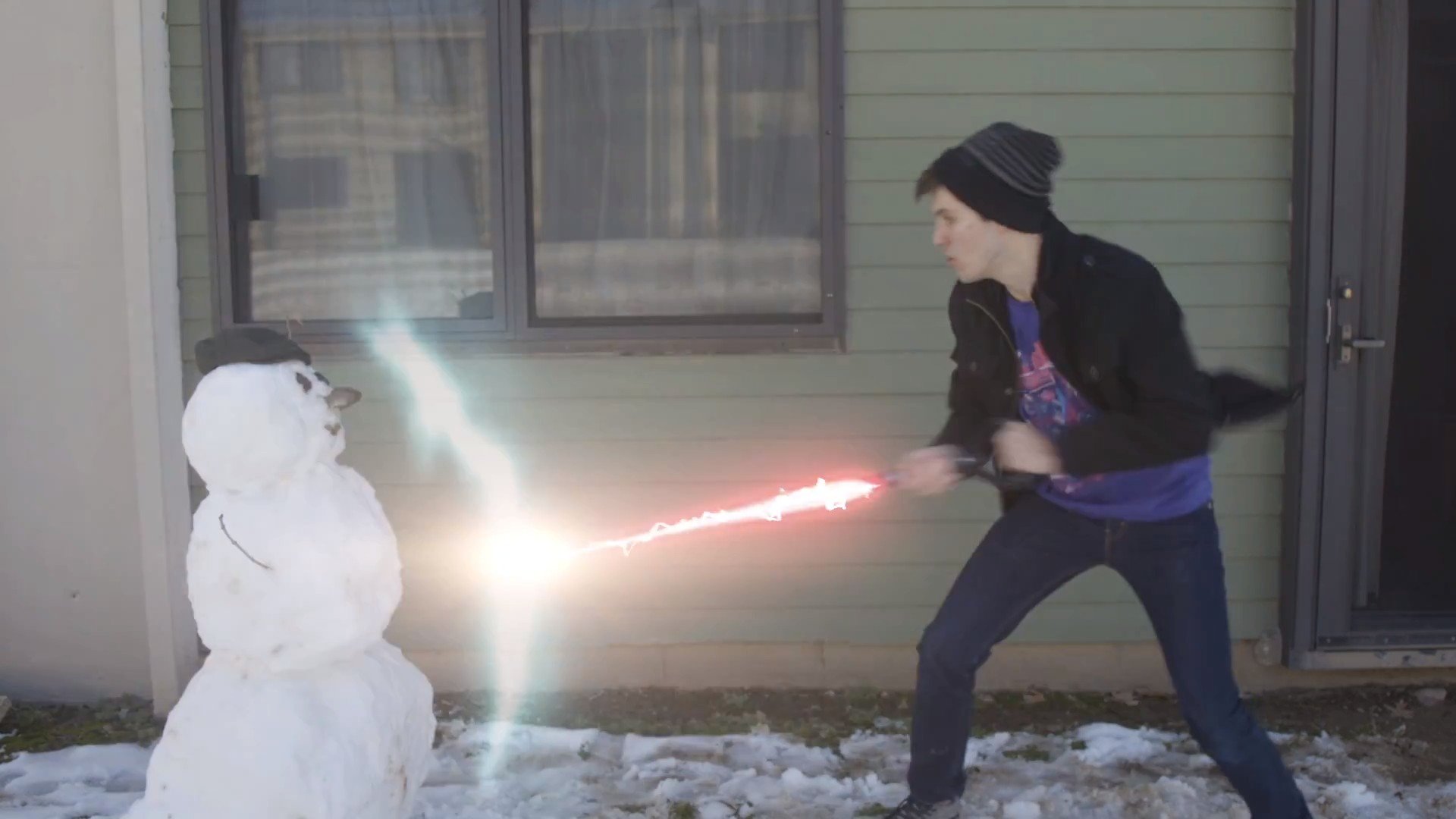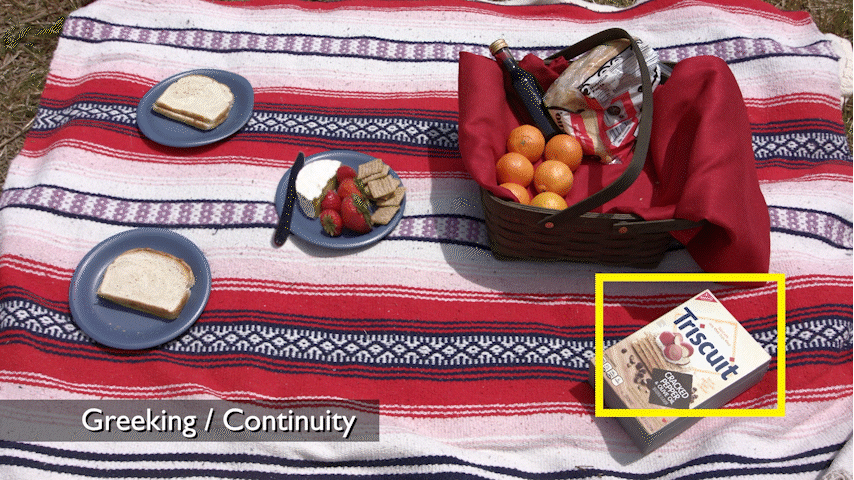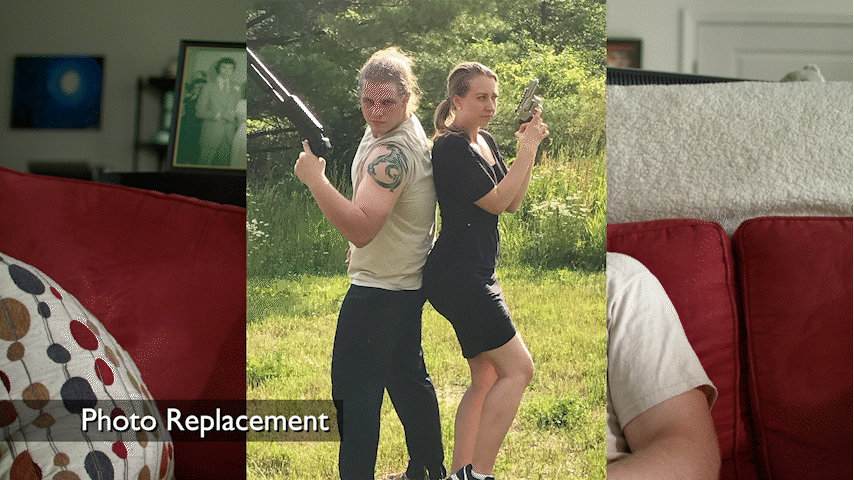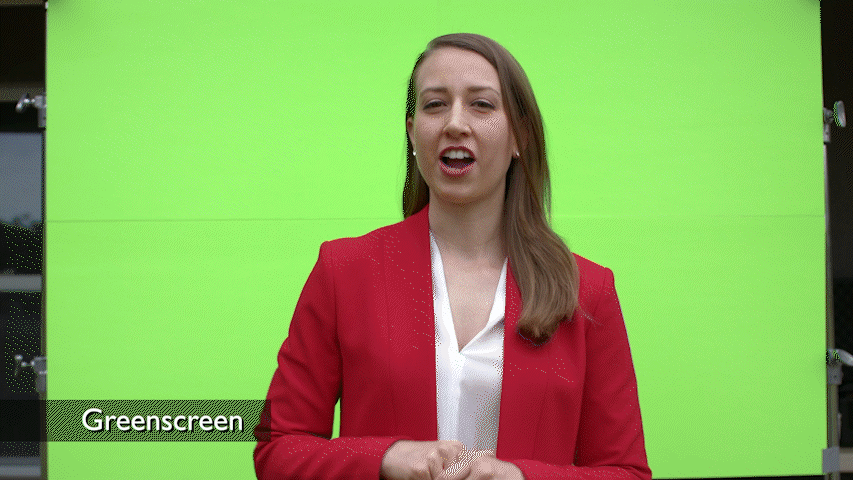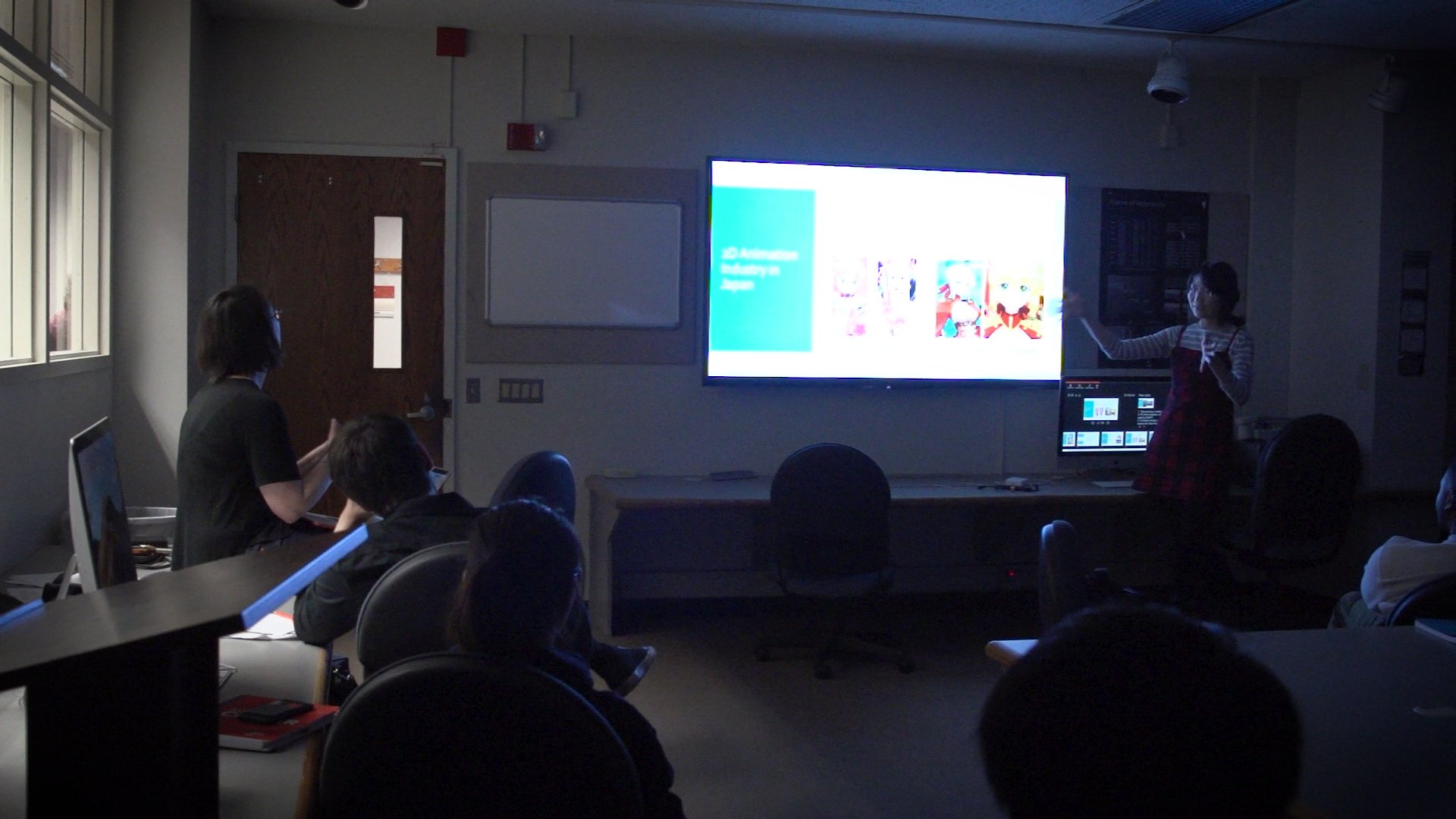visual effects for live action

This hands-on Production course enhances students’ live action storytelling abilities, from correcting “fix-it in post” shots (e.g. equipment/crew removal), to invisible effects (e.g. screen replacements, greenscreen), to creative effects (e.g. supernatural abilities or events).
Students are involved in all aspects of VFX from Producing to Shooting to Editing to Artist, beginning with how to prepare for VFX in pre-production - ensuring they have the best footage to be successful.
Students will leave the course making an individual or small group project. It’s not recommended that students take this course simultaneously with another post production course, as the workload can be heavy at times.
assignments
introduction
saber
After an introductory lecture covering basic techniques and terminology, students are assigned to small groups where they are instructed to write, film, and edit an original short film that will showcase a 2D saber effect.
Although the majority of the project is collaborative, each student is tasked with creating their own version of the visual effects for the film. This project is particularly import since it teaches students how to design a script, storyboards, and edit with VFX in mind.
fundamentals
“The Picnicking”
Following this introduction, the class dives into a series of basic visual effects techniques utilizing a short film that has already been shot and edited specifically for these tasks. This project, “The Picnicking,” covers the following topics.
Photo Replacement
Rotoscoping
Wipe Transitions
Crew Removal
Greeking
Green Screen Replacement
2D Flying Effect
These mini-projects help students practice the technical fundamentals of visual effects but also give them opportunities to flex their creativity and design skills. At the end of the semester, the students vote on their favorite submission for each task and the top choices are edited together into a final cut of the short film.
the final project
Once the projects are completed, the artist must all prepare a before/after reel to showcase the visual effects work and explain what was achieved. This is especially useful for “invisible” effects which the audience is not meant to notice. This reel and the final project are both shown together at an end-of-semester screening.
Along with sharing their own work, students are assigned the task of critiquing their classmates’ films and providing useful feedback that they could use to improve the project even further. They must also write a reflection essay on their own experiences and feelings regarding their progress.
Next, the films are edited until a locked picture cut is approved. The class then holds a spotting session for each project where they help decide exactly how many shots will require VFX and what the scope the work will be. These shots are inserted into a bid/tracker before work begins. This tracker simulates industry-standard management software so that students gain experience following a professional workflow for organization and communication.
As the VFX work begins, the artists must make and keep deadlines so that all of the work can be completed on time. The professor plays the role of the client, making additional requests and giving feedback as each version of the shots is presented. Once, all of the shots are completed, they are cut back into the full film for the final product.
All of these assignments are designed to prepare the students for their final project in the class. These final projects can take the form of narrative short films, music videos, documentaries, or another type of work that each student creates on their own or in a small group.
Early on, each student must present their project idea to the class and refine the concept until they are able to write a script ideal for the visual effects work they would like to showcase. They must then create the storyboards and shooting plan so that they can assemble a crew and film their project.
(3 credits) – TRF 441/641 (Fall and Spring)
Software: Fusion, After Effects, Premiere
Goals: Adding VFX to each stage of Production (Pre, Prod, Post) in 2D
Final Project: shoot a short film/music video and add VFX to it

